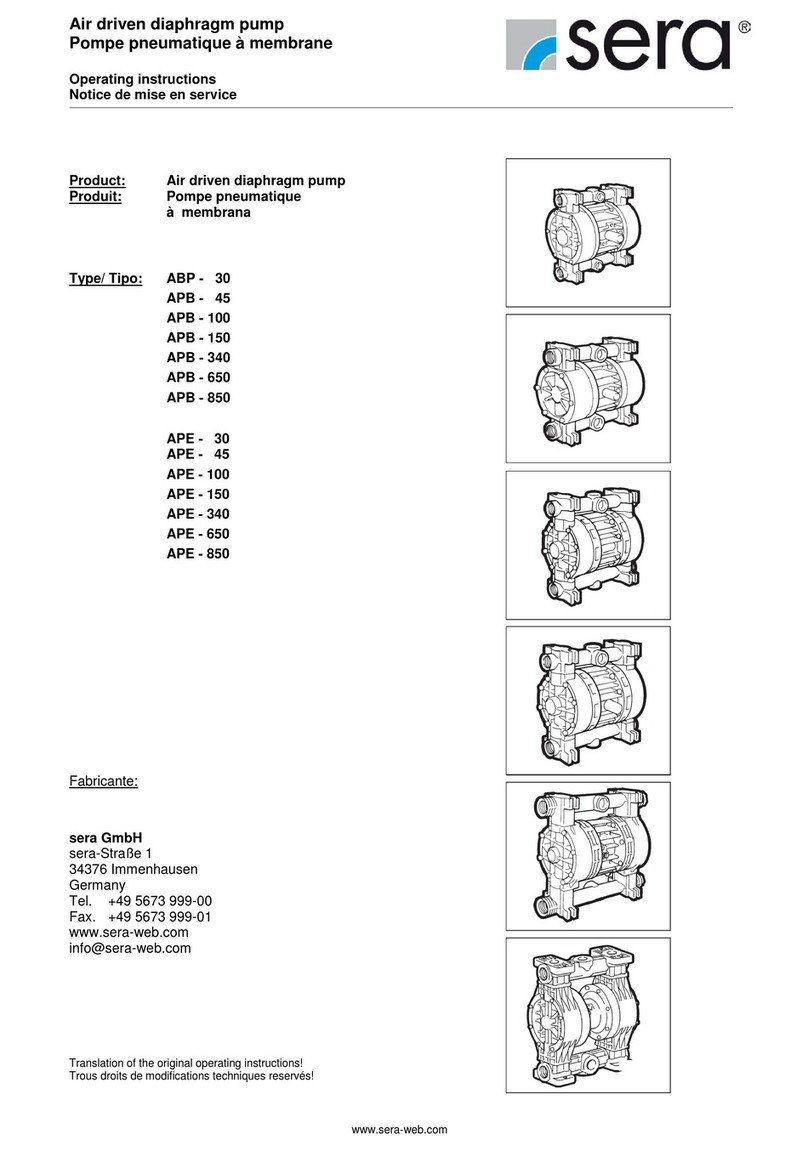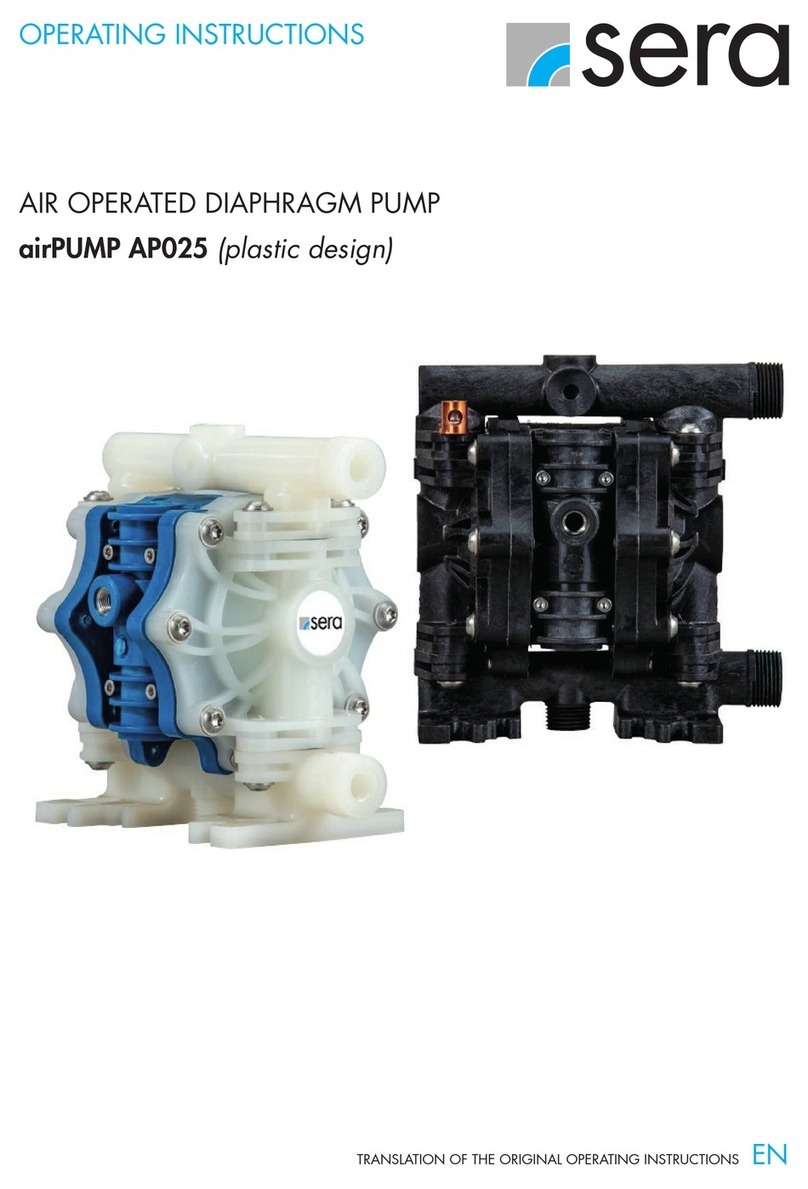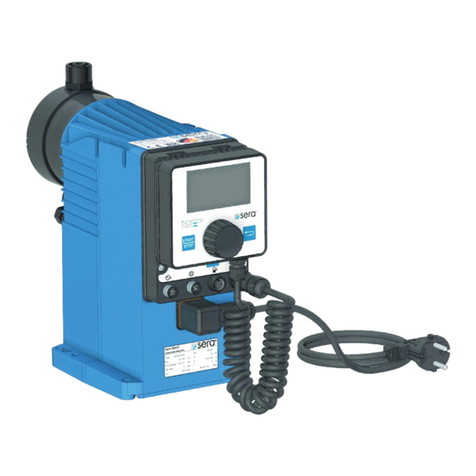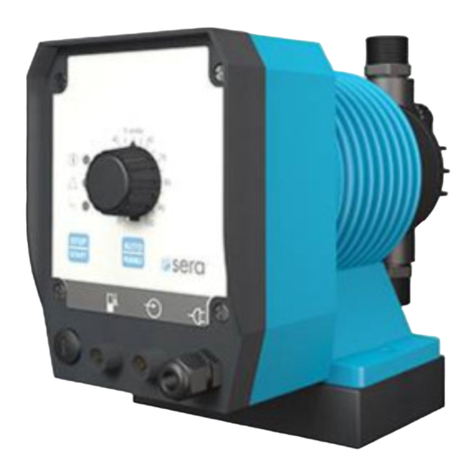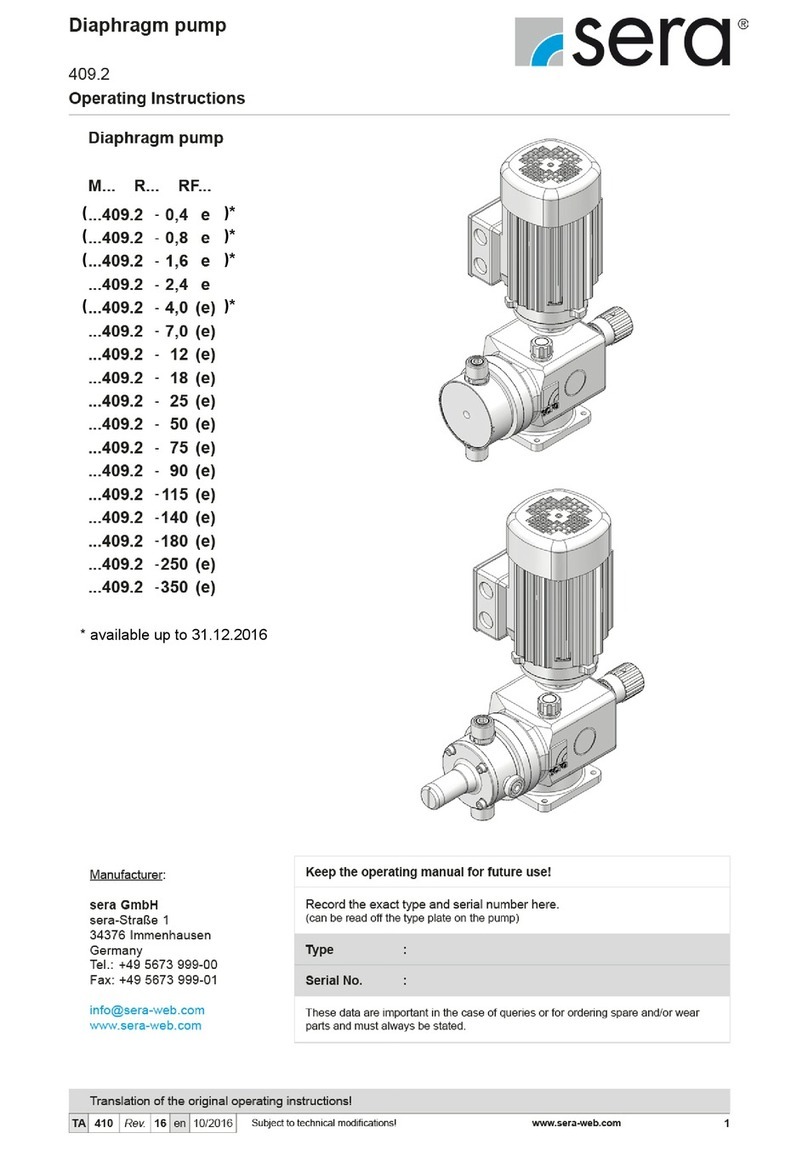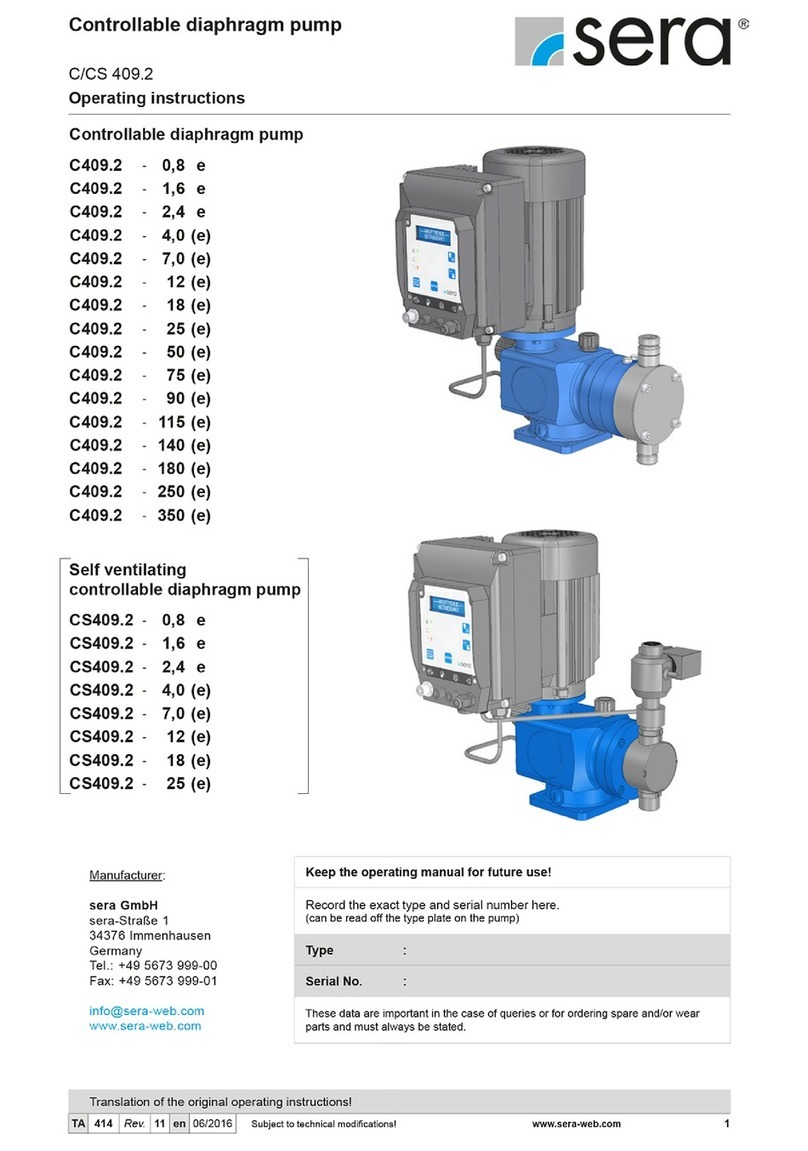
Multi-layer diaphragm pump
Serie 409.2 ML
Operating instruction
2 www.sera-web.com Technical modifications reserved! TA
431 Rev. 8 en 06/2015
Content:
1General...................................................................4
2Types......................................................................4
2.1 Model key...............................................................4
2.2 Type plate...............................................................4
2.3 Materials.................................................................5
2.4 Viscosity, dosing medium........................................5
2.5 Dosing range ..........................................................5
2.6 Noise test................................................................5
3Safety instructions ..................................................5
3.1 Quality instructions..................................................5
3.2 Marking of instructions............................................5
3.2.1 Marking of instructions (operating manual)....................5
3.2.2 Marking of instructions (Product)....................................5
3.3 Qualification and training of personnel ....................5
3.4 Dangers in case of inobservance of the safety
instructions .............................................................6
3.5 Safety-conscious working .......................................6
3.6 Safety instructions for the operator..........................6
3.7 Safety instructions for maintenance, inspection and
installation...............................................................6
3.8 Arbitrary modification and spare parts production ...6
3.9 Improper use ..........................................................6
3.10 Proper use..............................................................6
3.11 Personal protection for service and maintenance....6
3.12 Utilities....................................................................7
4Transportation and intermediate storage.................7
4.1 General...................................................................7
4.2 Transport................................................................7
4.3 Storage...................................................................7
5Assembly groups of multi-layer diaphragm pump....8
6Technical data ........................................................9
6.1 Dimensions.............................................................9
6.2 Technical data......................................................11
6.2.1 Output data...................................................................11
6.2.2 Motor data BG71 ..........................................................11
7Functional discription.............................................12
7.1 General .................................................................12
7.2 Assembly groups of the multi-layer diaphragm
pumps 409.2 ........................................................12
7.2.1 Stroke mechanism........................................................12
7.2.2 Stroke length adjustment..............................................12
7.2.3 Assembly pump ............................................................14
7.2.4 Pump body....................................................................15
7.2.5 Suction-/Pressure valve................................................15
7.2.6 Stroke frequency transmitter (optional) ........................15
7.2.7 Diaphragm rupture monitoring......................................16
7.3 Driving motor.........................................................17
7.3.1 Motor connection (standard).........................................17
7.3.2 Direction of rotation.......................................................17
7.3.3 Terminal box .................................................................17
7.3.4 Start-up.........................................................................17
7.3.5 Motor protection............................................................17
7.3.6 Maintenance of the drive motor....................................18
7.3.7 Restart...........................................................................18
8Installation.............................................................18
8.1 Installation instructions..........................................18
8.1.1 Provide for an overpressure protection ........................19
8.1.2 How to prevent a backflow of the dosing medium........20
8.1.3 How to eliminate undesired siphoning..........................20
8.1.4 How to ensure an airless suction..................................21
8.1.5 Installing the empty-tank alarm.....................................21
8.1.6 How to avoid an emptying of the suction line...............22
8.1.7 Line strainer ..................................................................22
8.1.8 Suction via a siphon pipe..............................................23
8.1.9 In case of slightly degassing dosing media..................23
8.1.10 Damping of the pulsation..............................................23
9Operation in explosion-hazardous areas ...............25
9.1 General .................................................................25
9.2 Identification..........................................................25
9.3 Installation.............................................................25
9.3.1 General .........................................................................25
9.3.2 Working in explosion-hazardous areas ........................25
9.4 Potential equalisation ............................................25
9.5Start-up.................................................................25
9.6 Operation ..............................................................25
9.6.1 General .........................................................................25
9.6.2 Degassing of the dosing medium.................................25
9.6.3 Temperature indications...............................................25
9.7 Maintenance..........................................................25
10 Maintenance..........................................................26
10.1 Wearing parts........................................................26
10.2 Spare parts............................................................26
10.3 Spare- and wearing parts ......................................27
10.4 Replacing the diaphragm.......................................29
10.4.1 General .........................................................................29
10.4.2 Diaphragm change .......................................................29
10.5 Oil change.............................................................32
11 Lubricant ...............................................................32
11.1 Lubricant in stroke mechanism..............................32
12 Fault analysis and corrective action.......................32
